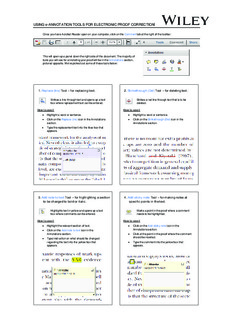| dc.contributor.author | Stokke, Bård Gunnar | |
| dc.contributor.author | Røskaft, Eivin | |
| dc.contributor.author | Moksnes, Arne | |
| dc.contributor.author | Møller, Anders Pape | |
| dc.contributor.author | Antonov, Anton Tinchov | |
| dc.contributor.author | Fossøy, Frode | |
| dc.contributor.author | Liang, Wei | |
| dc.contributor.author | Lopez-Iborra, German | |
| dc.contributor.author | Moskát, Csaba | |
| dc.contributor.author | Shykoff, Jacqui A. | |
| dc.contributor.author | Soler, Manuel | |
| dc.contributor.author | Vikan, Johan Reinert | |
| dc.contributor.author | Yang, Canchao | |
| dc.contributor.author | Takasu, Fugo | |
| dc.date.accessioned | 2017-10-06T09:21:53Z | |
| dc.date.available | 2017-10-06T09:21:53Z | |
| dc.date.created | 2015-10-15T21:32:34Z | |
| dc.date.issued | 2016 | |
| dc.identifier.citation | Biological Journal of the Linnean Society. 2016, 118 (2), 215-225. | nb_NO |
| dc.identifier.issn | 0024-4066 | |
| dc.identifier.uri | http://hdl.handle.net/11250/2458880 | |
| dc.description.abstract | The evolutionary equilibrium hypothesis was proposed to explain variation in egg rejection rates among individual hosts (intra- and interspecific) of avian brood parasites. Hosts may sometimes mistakenly reject own eggs when they are not parasitized (i.e. make recognition errors). Such errors would incur fitness costs and could counter the evolution of host defences driven by costs of parasitism (i.e. creating equilibrium between acceptors and rejecters within particular host populations). In the present study, we report the disappearance of host eggs from nonparasitized nests in populations of seven actual and potential hosts of the common cuckoo Cuculus canorus. Based on these data, we calculate the magnitude of the balancing parasitism rate provided that all eggs lost are a result of recognition errors. Importantly, because eggs are known to disappear from nests for reasons other than erroneous host rejection, our data represent the maximum estimates of such costs. Nonetheless, the disappearance of eggs was a rare event and therefore incurred low costs compared to the high costs of parasitism. Hence, costs as a result of recognition errors are probably of minor importance with respect to opposing selective pressure for the evolution of egg rejection in these hosts. We cannot exclude the possibility that low or intermediate egg rejection rates in some host populations may be caused by spatiotemporal variation in the occurrence of parasitism and gene flow, creating a variable influence of opposing costs as a result of recognition errors and the costs of parasitism. | nb_NO |
| dc.language.iso | eng | nb_NO |
| dc.publisher | Oxford University Press | nb_NO |
| dc.title | Disappearance of eggs from non-parasitized nests of brood parasite hosts – the evolutionary equilibrium hypothesis revisited | nb_NO |
| dc.type | Journal article | nb_NO |
| dc.type | Peer reviewed | nb_NO |
| dc.description.version | acceptedVersion | nb_NO |
| dc.source.pagenumber | 215-225 | nb_NO |
| dc.source.volume | 118 | nb_NO |
| dc.source.journal | Biological Journal of the Linnean Society | nb_NO |
| dc.source.issue | 2 | nb_NO |
| dc.identifier.doi | 10.1111/bij.12733 | |
| dc.identifier.cristin | 1280951 | |
| dc.relation.project | Norges forskningsråd: 218144 | nb_NO |
| dc.description.localcode | © The Author(s) 2015; all rights reserved. Published by Oxford University Press. This is the authors' accepted and refereed manuscript to the article. | nb_NO |
| cristin.unitcode | 194,66,10,0 | |
| cristin.unitname | Institutt for biologi | |
| cristin.ispublished | true | |
| cristin.fulltext | original | |
| cristin.fulltext | postprint | |
| cristin.qualitycode | 1 | |
